Welcome to Our Blogs
INCREASE YOUR AWARENESS
Follow along as we share valuable knowledge and content to enrich and empower your everyday life.
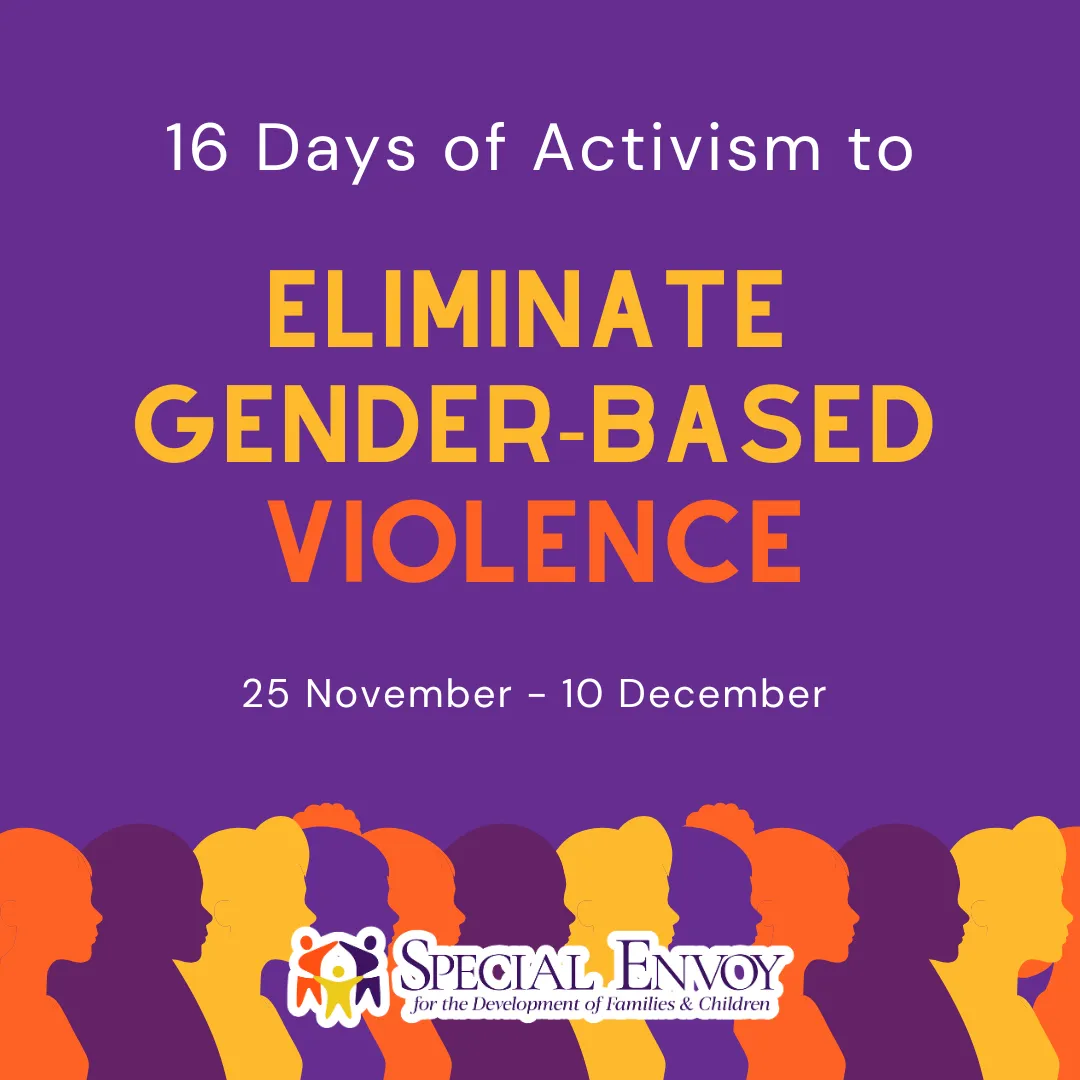
16 Days of Activism to Eliminate Gender-Based Violence
Types of Protection Orders Available to Victims of Domestic Violence

In honour of the 16 Days of Activism to Eliminate Gender-Based Violence which begins on the 25th of this month, we will feature informative and empowering information about gender-based violence.
When it comes to gender-based violence, in particular domestic violence, it is important for Belizeans to know that we have a Domestic Violence Act which sets out the laws and regulations regarding handling domestic violence cases.
Under this Act, there are several types of protection orders that victims of domestic violence can apply for. Here’s an outline and explanation of each:
1. Protection Order:
A court may issue a Protection Order to prevent further abuse by prohibiting the respondent (the accused person) from specific actions. This can include:
- Prohibition from violence or threats towards the victim.
- Restrictions on entering premises where the applicant resides, works, or frequently visits.
- Prohibition of any form of contact (direct or indirect) with the victim, including phone calls or messages.
- Prohibition from damaging or disposing of shared property.
- Maintaining a minimum distance from the victim.
- Restraining the respondent from inciting others to harass the victim.
2. Occupation Order:
An Occupation Order allows the court to direct the respondent to leave and stay away from the residence shared with the victim, regardless of ownership or tenancy rights. This order:
- Grants the applicant the right to live in the residence without the respondent.
- Allows the court to specify terms under which the respondent must vacate the premises.
- It may include provisions for police assistance to ensure the respondent vacates the property and protects the applicant during the process.
3. Tenancy Order:
If the shared residence is rented, a Tenancy Order may be issued alongside or as part of an Occupation Order. This order:
- Allows the victim to stay in the rented property.
- Directs the respondent to continue paying the rent, either fully or partially, as decided by the court.
4. Counselling Order:
A Counselling Order mandates the respondent, victim, or any other person involved to attend professional counselling sessions. This order:
- Requires the respondent to attend therapy to address behaviours that contribute to domestic violence.
- Specifies that the counsellor must report missed sessions to the court and submit an assessment regarding the counselling's effectiveness.
5. Interim Order:
An Interim Order provides immediate, short-term protection while the court process is ongoing. This order:
- Contains provisions similar to a full Protection Order but is temporary (up to 21 days initially).
- Can be issued before a full hearing if the court believes immediate protection is necessary.
6. Undertaking:
Although not a formal order, an Undertaking is an agreement where the respondent, under oath, promises not to engage in abusive conduct. The court may still issue an order to support this undertaking if necessary.
Each protection order serves to prevent further abuse, ensure safety, and promote stability for victims during and after legal proceedings.
How to Create a Safety Plan
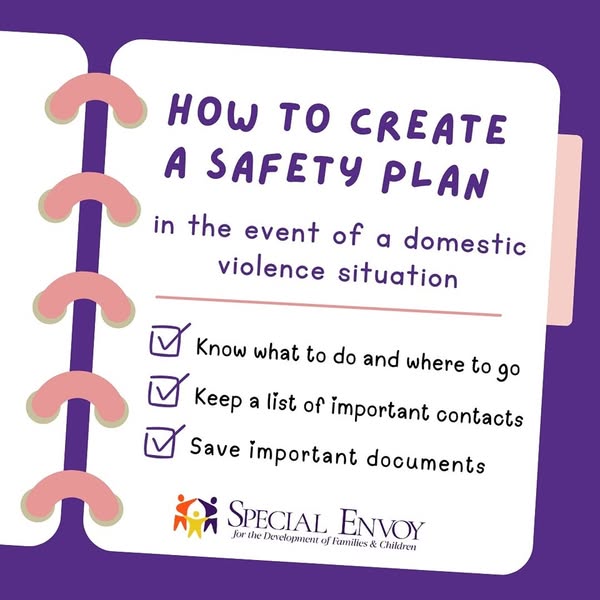
Creating a safety plan is a crucial step toward protection and empowerment if you’re in a domestic violence situation. A well-thought-out plan can help you and your loved ones escape to safety swiftly and effectively.
1. Plan Your Escape: Identify a safe place to go if you are in immediate danger—this could be a trusted friend's house, a family member, or a shelter.
2. Communicate with Your Children: If your children are old enough, explain your plan to them in a way they can understand.
3. Prepare Your Transportation: If you have access to a car, truck, or bicycle, ensure it is in working order. Make sure there is enough fuel in the vehicle and that it is ready to use when needed.
4. Keep Spare Keys and Important Numbers: Store an extra set of keys in a secret place, somewhere you can access quickly. Have a list of important contacts (family, friends, support services) that you can reach out to, hidden in a safe location or memorized if possible.
5. Secure Important Documents: Gather essential documents, including your passport, birth certificates, driver’s license, lease or mortgage agreements, and any banking information. Place these in a spot you can quickly access, or consider creating digital backups that you can access from a secure online account.
A safety plan is an empowering tool—it may not only help you find a safe escape but can also offer peace of mind, knowing that you are prepared.
(Information adapted from the domestic violence resource pamphlet prepared by the National Women’s Commission)
Self Quiz: Could you be a victim of domestic violence?

To support awareness and understanding of domestic violence, the following series of questions is designed to help you assess whether you might be experiencing this form of violence.
Does your partner have frequent mood swings or personality changes?
Yes
No
Are you afraid to make mistakes in front of him/her?
Yes
No
Does he/she make you feel like you are worthless without him/her?
Yes
No
Has he/she ever hit you or threatened you?
Yes
No
Does he/she make you ask him/her permission before you go anywhere?
Yes
No
Does he/she get jealous or angry if you spend time with friends or family?
Yes
No
Do you find yourself trying very hard not to upset him/her, even if it means hiding your own feelings and opinions?
Yes
No
Does he/she abuse drugs or alcohol?
Yes
No
If your answers to these questions indicate a concerning trend, it may be wise to consider your options to ensure your safety and well-being.
These possible courses of action could include exploring the option of leaving the relationship, considering legal action, applying for a separation, or engaging in counseling to address the relationship dynamics.
Still, whatever you decide to do, it is crucial for you to prioritize your safety and well-being when evaluating your choices because your health and happiness are what should be most important.
(Information adapted from the domestic violence resource pamphlet prepared by the National Women’s Commission.)
Red Flags of Dating Violence
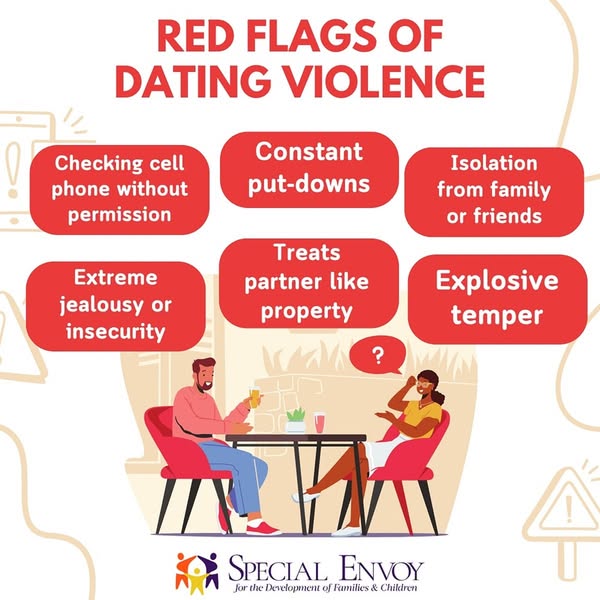
Recognizing Red Flags of Dating Violence is essential, especially among younger individuals, as they can serve as warning signals for future acts of domestic violence
These behaviors may start subtly at first but can quickly escalate, becoming more harmful over time.
Here are 10 Red Flags of Dating Violence to look out for:
1. Checking a partner’s phone or email without permission
2. Constant put-downs
3. Extreme jealousy or insecurity
4. Explosive temper
5. Isolation from family or friends
6. Making false accusation
7. Creating fear for one's safety
8. Intimidations - induces fear
9. Treats partner like property
10. Exercising controlling behavior - makes all the decisions
These red flags are especially dangerous because they often go unnoticed or are normalized in young relationships.
Therefore, identifying these behaviors early is critical in preventing the escalation of violence and ensuring that individuals can build healthier, more respectful relationships in the future.
This not only empowers individuals to protect themselves but also helps promote a culture of safety and respect.
Domestic Violence Red Flags
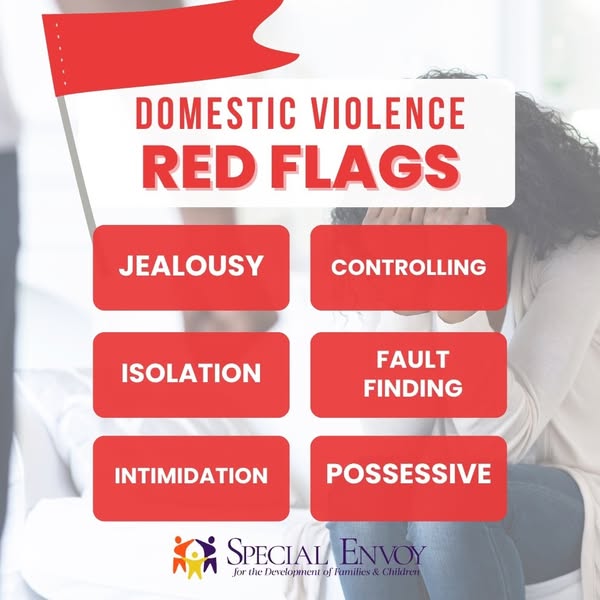
Domestic violence is a serious issue that affects individuals and communities worldwide.
Often, the warning signs can be subtle and easy to overlook, but recognizing these red flags is crucial for keeping yourself and others safe.
By familiarizing yourself with the red flags of domestic violence, you can help identify harmful behaviors and take steps to prevent or intervene before the situation escalates.
Here are 10 red flags of domestic violence to look out for:
Jealousy: A person who uses jealousy as a sign of love is often trying to control and manipulate their partner. It can start with small comments about other relationships, and over time, can develop into an obsession that leads to further emotional or physical abuse.
Intimidation: If someone instills fear in you through their actions or words, this is a form of intimidation. It can involve threatening behavior, aggressive gestures, or physical acts meant to make you feel afraid or powerless.
Domination: A partner who sets all the rules and expects unquestioning compliance is trying to dominate the relationship. They may make decisions on behalf of both individuals, disregarding your opinions, preferences, and needs.
Fault Finding: Constantly passing judgment and criticizing, especially in a way that undermines your self-esteem, is a key red flag. This behavior involves blaming you for things outside your control and making you feel inadequate or unworthy.
Possessiveness: When someone treats you like property or insists that you belong to them, they are displaying possessive behavior. This can manifest as limiting your freedom or pressuring you to cut ties with others, including friends and family.
Disrespect: A partner with negative attitudes toward women or other individuals often displays a deep lack of respect. This can include sexist remarks, degrading language, or dismissing your feelings and experiences.
Controlling: If a partner makes all the decisions for you, whether it’s about finances, social activities, or personal choices, they are exercising control over your life. This creates an imbalance where you feel like you have no voice or autonomy.
Entitlement: Someone who feels entitled to say or do whatever they want without considering your feelings is often using power to dominate the relationship. This can include disrespecting your boundaries or making you feel guilty for asserting your needs.
Hypocrisy: When someone applies different standards to themselves than to others, it creates an unfair and oppressive dynamic. They may expect you to follow strict rules while they engage in behaviors they deem acceptable for themselves.
Isolation: Keeping you away from friends, family, or other support networks is a tactic used by abusers to increase their control over you. Isolation makes it harder to seek help, as it diminishes your access to those who can offer support and guidance.
Recognizing these red flags is essential in addressing domestic violence within our communities.
By understanding these signs and raising awareness, we empower ourselves and others to take action and protect those who may be experiencing abuse.
If you or someone you know is facing any of these behaviors, it is crucial to seek help immediately.
Together, we can help prevent domestic violence and foster a community built on respect, love, and equality.
How to Support a Victim of Domestic Violence
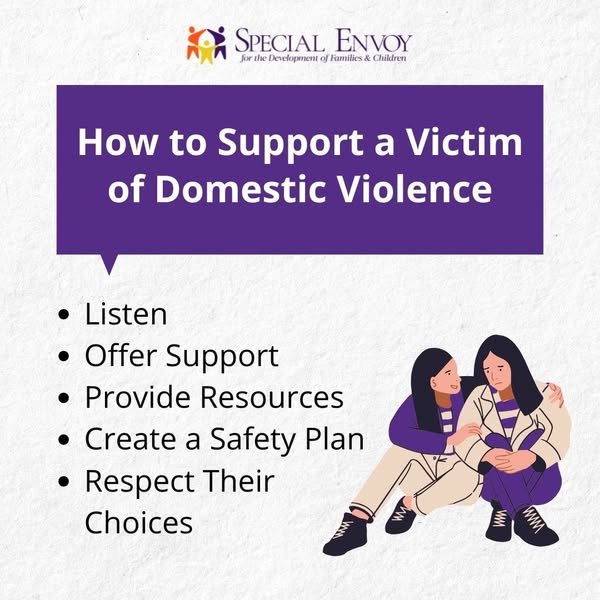
According to Refuge.org.uk, “It takes, on average, 7 attempts before a woman is able to leave an abusive relationship for good”.
This is because escaping an abusive partner is often a process and not a single act.
For this reason, in the long run, victims of domestic violence require the support of family, friends, and the community to be the lifeline they need.
If you know someone who is in an abusive relationship, here are some ways you can help to support them:
Start by listening without judgment. Do so by providing a safe, confidential space for them to share their experience. Allow your friend/family to speak while also expressing your concern and letting them know you believe what they are telling you.
Secondly, you can offer support by reassuring them they are not alone, validating their emotions, and emphasizing their strength. Additionally, because domestic violence affects individuals on many levels, it’s important to find out from them how best you can support them.
Thirdly, you can share critical resources with them like hotlines, shelters, or legal aid to connect them with expert assistance. Encourage them to utilize these services, as they are readily available to assist them.
Likewise, you can also work with them to develop a personalized safety plan to ensure their well-being. This can include planning how they will leave, creating a list of important contacts, and securing vital documents.
Finally, above all, in whatever way you support a victim of domestic violence, you must always respect their choices. Avoid pressuring them and allow them to ultimately decide their next steps. Let them know you will be there for them no matter what they decide to do.
Together, we can all play a role in empowering victims and breaking the cycle of abuse. In this way, we are helping to create a world where survivors are uplifted, heard, and supported.
(Information adapted from Women’s Advocates)
Sources:
National Women’s Commission. “16 Days of Activism.” www.nwcbelize.org/programs/16-days-of-activism.
Refuge. "It Takes, on Average, 7 Attempts Before a Woman Is Able to Leave an Abusive Relationship for Good." www.refuge.org.uk.
@ Copyright 2025 - Special Envoy for the Development of Families & Children| All rights reserved

